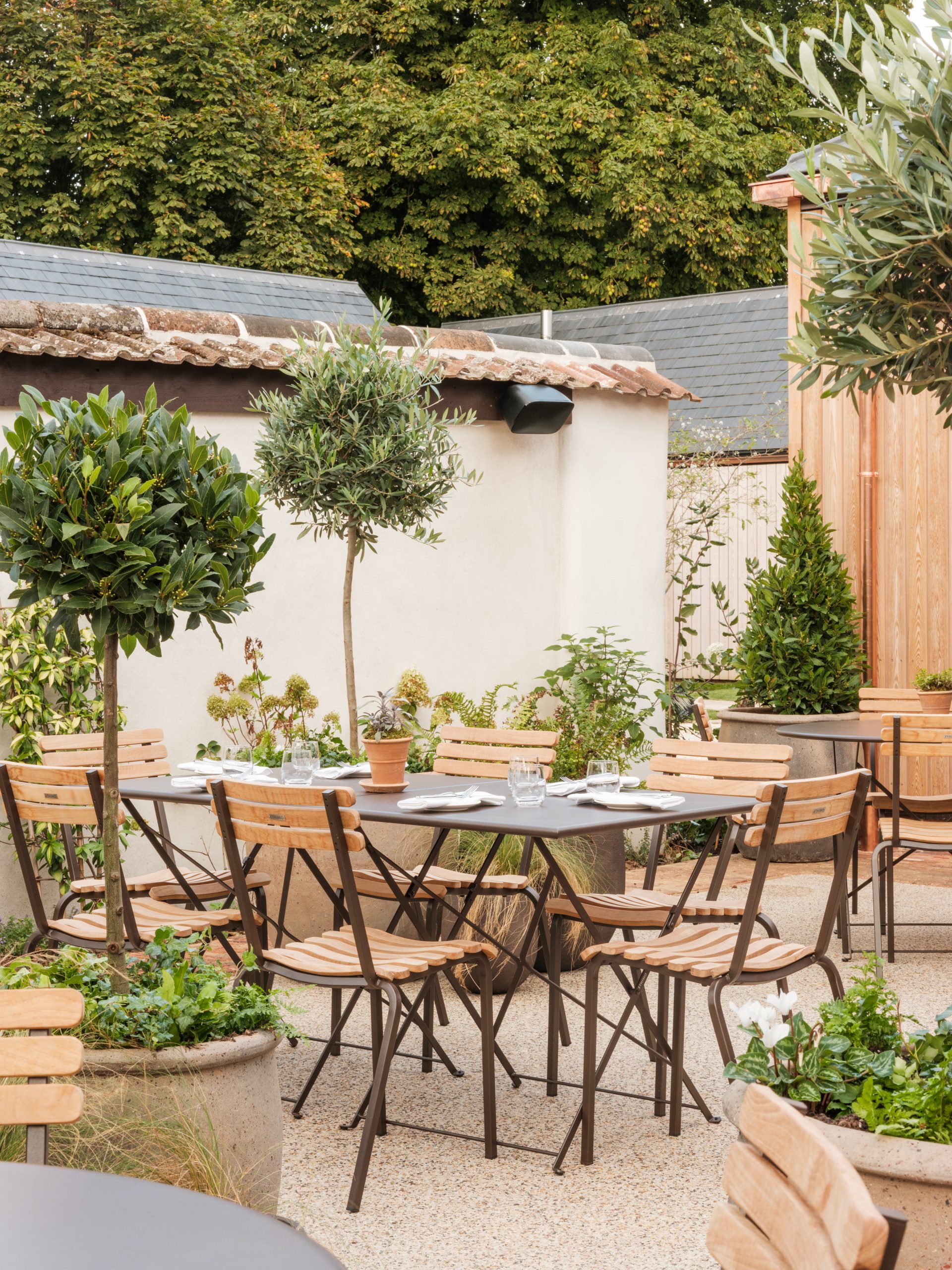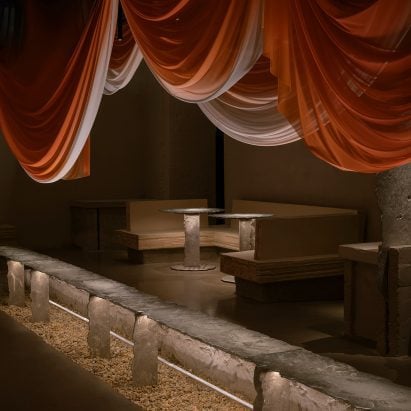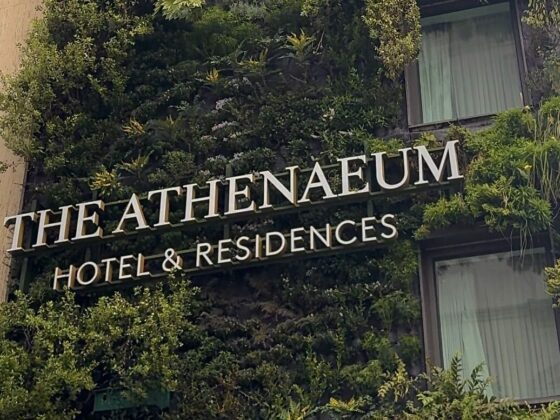
Chef Jordan, The Great Bustard Pub
Nestled in the heart of the Wiltshire countryside, The Great Bustard is fast becoming one of the UK’s most exciting gastro destinations—an escape where luxury meets rustic charm, and sustainability is more than just a buzzword. At the helm of its culinary offering is Chef Jordan, whose fine-dining roots at the two-Michelin-starred Moor Hall have profoundly shaped his approach to food.
Now leading the kitchen at The Great Bustard, Jordan brings with him a passion for hyper-local sourcing, nose-to-tail cooking, and a deep respect for the land he works on. With ingredients foraged from the surrounding estate, game caught just a stone’s throw from the pub, and vegetables grown steps from the kitchen, his menus are a vibrant expression of place, season, and purpose.
In this interview, Chef Jordan shares how his time at Moor Hall transformed his philosophy, the joys and challenges of working with estate-grown produce, and how The Great Bustard is redefining what it means to be a truly sustainable country pub.
Chef Jordan, your journey began at the prestigious two-Michelin-starred Moor Hall in Lancashire. How did your time there shape your approach to cooking, and what elements of fine dining do you carry with you into your work at The Great Bustard?
Working at Moor Hall truly opened my eyes to working with produce that is growing right outside the door. It really gave me a greater appreciation for the time and effort it takes to grow and source your own produce, rather than simply ordering from a supplier and getting it delivered the next day. Working with fresh, local produce can take weeks, even months of planning, and a whole team to bring it into us. There is another level of excellence in sourcing from farms that are within a few miles radius of the restaurant – not only does it keep the carbon footprint down, but I truly believe you can taste the freshness of produce picked and served the very same day. The foreplanning involved in working with fresh, local and seasonal produce has really shaped my approach to cooking. At The Great Bustard, I use this same approach working with local producers, as well as sourcing produce straight from our Estate.
The Great Bustard stands out for its focus on seasonality and locally-sourced ingredients. How do you decide what to feature on your menu each season, and what are some of your favourite ingredients from the Great Durnford Estate?
At The Great Bustard, we are incredibly fortunate to receive a vast amount of produce from the Estate – not just fruit and vegetables from the Kitchen Garden, but also fresh game, top quality lamb and fantastic mushrooms. These are staples on our menu throughout the year and we showcase this produce in various ways across all menus. I also particularly love the arrival of Spring, as I have a chance to get out foraging wild garlic and elderflowers and berries – some of my favourite ingredients. These grow in abundance around the Estate, so it’s also incredibly fun for the kitchen to work together to find interesting and unique ways of preserving these ingredients, such as pickling and dehydrating, which enables us to both minimise waste and use the produce all year round.
Sustainability is a central theme in your cooking, from working with locally-sourced produce to using every part of your ingredients. Could you share more about your approach to reducing waste in the kitchen?
We are very conscious of being sustainable and this is not only important from an ethics standpoint, but also from a business standpoint. We try our best to source as local as possible. We use the best quality produce from right here in the Woodford Valley and surrounding areas, including whole animals, such as lamb from the Estate and beef from the nearby Springbottom Farm. We are able to use every part of the animal which keeps us on our toes, constantly changing the cuts and coming up with creative ways of cooking them. In the kitchen the team are always on the case to reduce the amount of waste from the produce we are using and coming up with innovative ways to use what we would otherwise throw in the bin. For example, we get a lot of vegetable trim and peelings from our Sunday roast vegetables which we heavily char in the woodfire oven and cook down to make a roast vegetable ketchup which is used in various dishes across our menus.
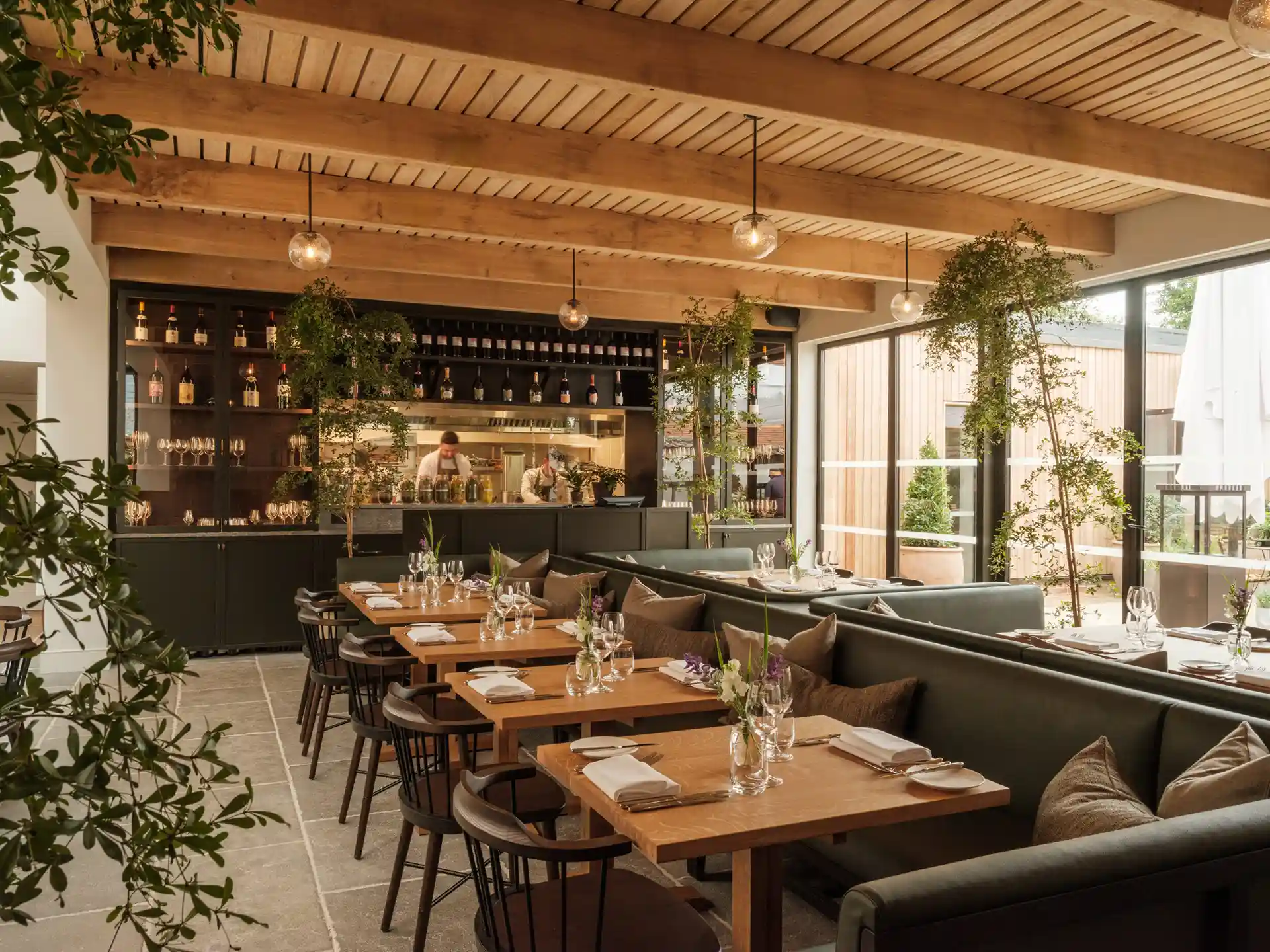
Talented head chef Jordan Taylor puts the farmers, the producers and the estate centre stage with the restaurant menu, which takes the best elements of modern British food and elevates them further.
One unique feature of your menu is the incorporation of game and foraged ingredients. Can you tell us how you source these ingredients, and what role they play in setting The Great Bustard apart in such a competitive gastro pub market?
Here at The Great Bustard we are so fortunate to have amazing produce straight from our Estate and we are very conscious to maximise all produce. For example, with the Estate venison, we use all the prime cuts on our A la Carte Menu, then mince or braise the trim to make into our wonderful pies and burgers for the pub. Even the bones are roasted and made into stocks and sauces. This applies for all game – we use any trimmings for dishes such as our terrines or bar snacks. This approach extends beyond our meat – we also ensure zero waste from our mushrooms. After prepping, we ferment all the trim into a fermented mushroom stock and then dry the pulp into fermented mushroom powders. We also make the most out of every season by foraging what we can from the Estate and surrounding areas then pickling, preserving and fermenting the produce to use all year round.
Your estate venison burger has become a crowd-pleaser, with the addition of charcoal mayo and truffle parmesan fries. What inspired you to elevate this classic dish, and how do you strike the balance between innovation and maintaining the essence of pub food?
We are always looking to showcase produce from the Estate and this was a way we could take an absolute pub classic, elevate it not only with the incredible quality of produce, but also put our own original stamp on it. Venison is also a meat some guests may not be overly familiar with, and perhaps wary to try. Serving it in such a familiar (and delicious) way not only creates a memorable dining experience, it also entices guests back for a second visit. And of course, the addition of smoky charcoal mayo and decadent truffle & parmesan fries bring a little elegance to our cozy country pub. It’s such a buzz when we hear guests have come especially to try our legendary burger!
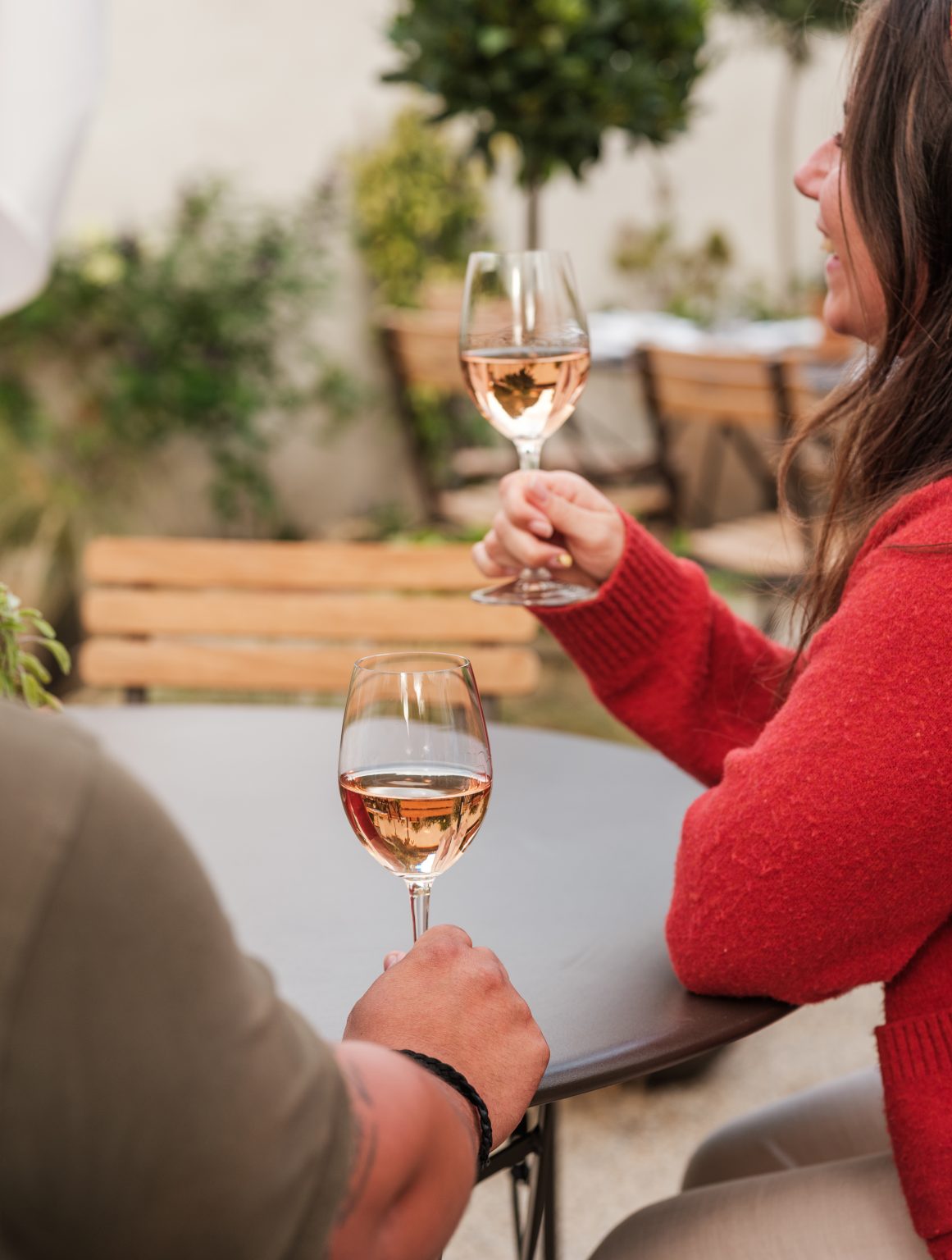
As well as craft beers and artisan local ales, cider and amazing home-infused tinctures by chef Jordan Taylor, there is an extensive and meticulously considered wine list which includes the first year of Otarda red from the family estate in Tuscany (Otarda means Great Bustard in Italian)
The Great Bustard is known for its incredible mains, like the estate lamb navarin. Can you walk us through the creation of this dish, and how you incorporate fresh, local produce into your recipes?
All our dishes start with the produce – quality, local, and seasonal. From there, creating dishes is a case of marrying ingredients together that work well. All the dishes tend to pull techniques and flavour combinations from my repertoire and experiences from eating out. Some of my dishes may be completely original, and feature only whilst the ingredients are in season. Others may reappear throughout the year and be more of a twist on a classic like the Estate lamb navarin. This will always find its way back on to the menu, featuring the same top quality lamb, but combining different seasonal flavours and ingredients each time to keep the dish fresh and exciting.
As a chef passionate about sustainability, how do you engage with the local community in terms of food sourcing? We understand visitors to the estate even bring in their own catch from the River Avon – how does this collaboration fit into your menu philosophy?
We pride ourselves on being a place for the community and engaging with our locals is a top priority. We build strong relationships with the familiar faces we see at the bar regularly throughout the week. Many of the regulars are keen fishermen and are always catching the most incredible fresh trout. They were keen not to see these catches go to waste and asked if we would be interested in taking them, which of course we jumped at the opportunity. We cook the trout many different ways but the main thing we do is cure and smoke it. We repay this kindness by cooking them up the fish that is brought in so they can really enjoy the fruits of their labour!
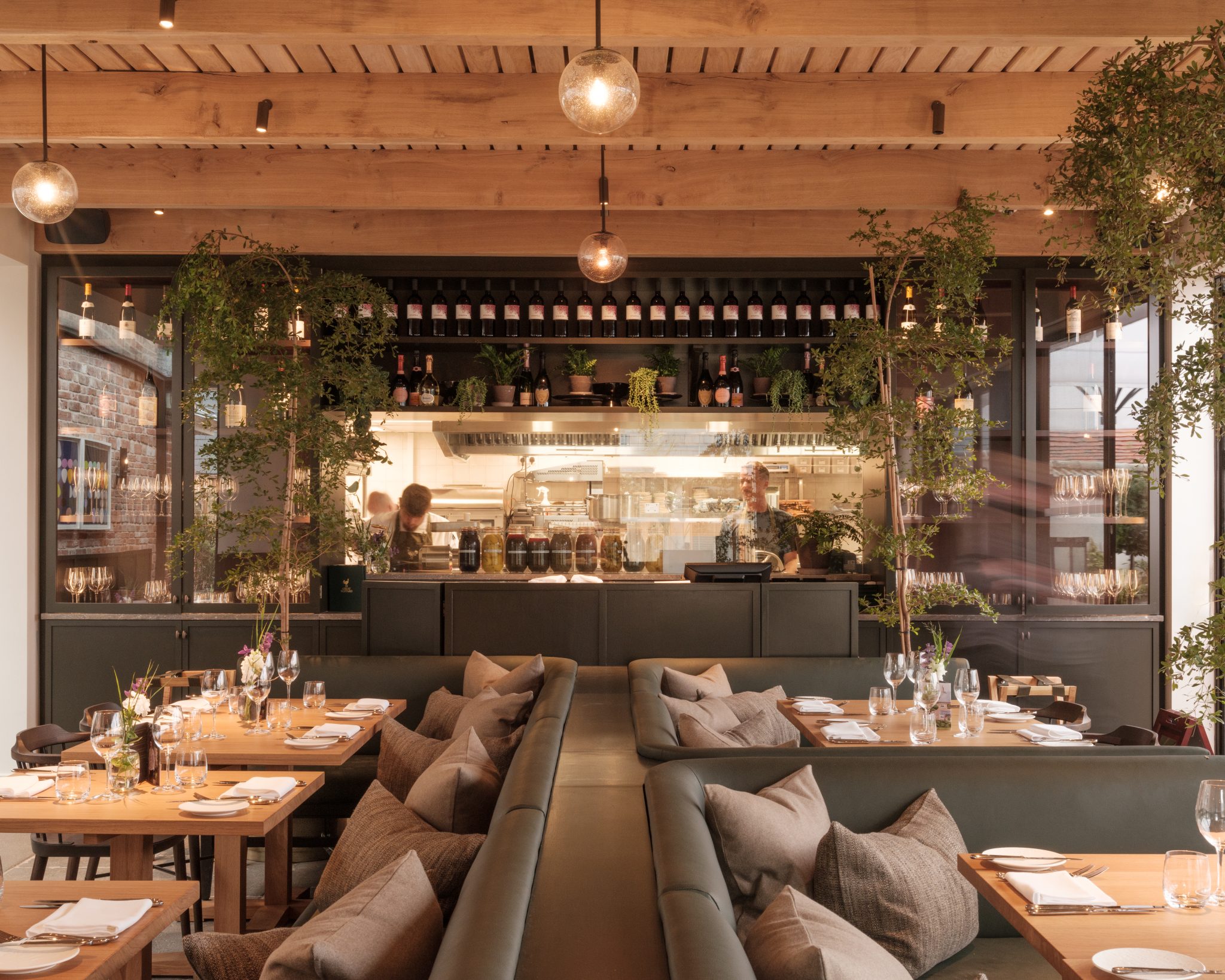
Talented head chef Jordan Taylor puts the farmers, the producers and the estate centre stage with the restaurant menu, which takes the best elements of modern British food and elevates them further.
With Easter approaching, many will be looking to create a memorable pub roast at home. Do you have any tips for making a gastro-pub-worthy roast, especially using seasonal ingredients?
When it comes to a showstopping roast, quality produce is ESSENTIAL. It’s much harder to get poor quality ingredients to taste great. Once you’ve decided on your meat, you need to know how best to cook it – a nice medium-rare beef sirloin or slow roasted pork belly. Top tip – always ask your local butcher for the best cut. And of course, all the best things take time, so plan ahead and slow cook – you will always get a better result. We cook all our roasts overnight low and slow. With Spring bursting into season, there is wonderful produce available to elevate your roast – asparagus, spring greens, morels and wild garlic. With fresh vegetables you want to keep them vibrant, so cook quick and cook simple – let those fresh flavours do the work for you.
With a treatment room, ten beautiful bedrooms, and an on-site farm shop, The Great Bustard offers much more than just food. How do you view the relationship between the food offering and the overall experience at The Great Bustard, and how does this impact the way you design your menus?
The Great Bustard is so much more than just a pub – it is a retreat. We are a destination for the locals to gather and also for everyone else to get away from the chaos of everyday. It is a place where you can come to switch off and enjoy the slow pace of the county. Stay the night in our stunning rooms which ooze luxury without losing sight of those home comforts! Go for a mindful walk around the countryside or relax with a spot of fishing, then enjoy a drink with the locals before you get ready for dinner and tuck into first class food. A glass of our very own Otarda wine from our Tuscan sister Estate enjoyed by the fire makes for the perfect night cap before bed. Wake up to our homemade breakfast – chef’s crumpets, our freshly baked English muffins or our legendary duck hash. Why not treat yourself to a massage or facial before you head home? And of course, don’t forget to pop into our farm shop on your way back to the car to stock up on lots of lovely local produce and our Durnford beauty products made right here in the village.
Looking ahead, what exciting developments can we expect from you at The Great Bustard? Are there any new dishes, concepts, or sustainability initiatives you’re excited to explore in the near future?
The Great Bustard is a young business but growing fast. We are always exploring new avenues we can expand and progress as a company, which I love because it constantly keeps my mind excited and engaged and us as a team moving forward. We have lots of ideas we can’t wait to turn into reality – from growing our farm shop offering and filling it with even more lovely, local produce to running tours exploring our area to showcase the incredible produce we have right on our doorstep. We also love the idea of working and collaborating with other amazing restaurants and chefs. There are so many fantastic places and people in our industry who we want to celebrate here at The Great Bustard, so definitely some exciting things to come.

